Predicting the Dynamic Parameters of Multiphase Flow in CFD (Dam-Break Simulation) Using Artificial Intelligence-(Cascading Deployment)
Abstract
1. Introduction
2. Literature Review
3. OpenFOAM Numerical Solution
- (1)
- Laminar flow (shallow water).
- (2)
- Over a flatbed.
- (3)
- No frictions.
- is the change of velocity with time;
- is the convective term;
- is the velocity diffusion term;
- is the body force term as external forces that act on the fluid (gravity);
- is the pressure term, fluid flows in the direction of largest change in pressure.
- represents the rate of change of property φ with time;
- is the advection of property φ by the fluid flow (net rate of flow-convection);
- represents the rate of change due to diffusion of property φ ( is diffusion coefficient divided by the fluid density);
- ( is the rate of change due to other sources ( is diffusion coefficient divided by the fluid density).
4. Methodology
5. Artificial Neural Network (ANN)
6. Model Building and Deployment
7. Results
Cascading and Non-Cascading Result
8. Conclusions
Funding
Conflicts of Interest
Nomenclature
| ρ | Density |
| μ | Dynamic viscosity |
| σ | Surface tension coefficient |
| g | Gravitational force |
| k | Surface curvature |
| γ | Second viscosity |
| U | Velocity |
| η | Dynamic |
| P | Pressure |
| τ | Diffusion coefficient over density |
| α | Phase fraction |
| VOF | Volume of Fluid |
| RANS | Reynolds-Averaged Navier-Stokes |
| CFD | Computational fluid dynamics |
| AI | Artificial intelligence |
| NN | Neural network |
| ANN | Artificial neural network |
| SPM | Smart proxy model |
| Root Mean Square Error |
References
- Pope, G.A. The Application of Fractional Flow Theory to Enhanced Oil Recovery. Soc. Pet. Eng. J. 1980, 20, 191–205. [Google Scholar] [CrossRef]
- Mohaghegh, S.; Haghighat, A.; Amini, S. Storage of CO2 in Geological Formations; CRC Press: Boca Raton, FL, USA, 2018; ISBN 9781138197145. [Google Scholar]
- Kazemi, M.; Takbiri-Borujeni, A. Non-equilibrium molecular dynamics simulation of gas flow in organic nanochannels. J. Nat. Gas Sci. Eng. 2016, 33, 1087–1094. [Google Scholar] [CrossRef]
- Feast, G.; Boosari, S.S.H.; Walton, J.; Cheng, Z.; Chen, B. Modeling and Simulation of Natural Gas Production from Unconventional Shale Reservoirs. Int. J. Clean Coal Energy 2015, 4, 23–32. [Google Scholar] [CrossRef]
- Mohaghegh, S.; Arefi, R.; Ameri, S.; Rose, D. Design and development of an artificial neural network for estimation of formation permeability. In Proceedings of the Petroleum Computer Conference, Dallas, TX, USA, 31 July–3 August 1994. [Google Scholar]
- Mohaghegh, S.; Ameri, S. Artificial Neural Network as a Valuable Tool for Petroleum Engineers; Society of Petroleum Engineers Paper No. 29220; Society of Petroleum Engineers: Richardson, TX, USA, 1995. [Google Scholar]
- Ansari, E.; Mohaghegh, A.; Shahnam, S.; Dietiker, M.; Borujeni, J.F.T.; Fathi, A. Data Driven Smart Proxy for CFD: Application of Big Data Analytics & Machine Learning in Computational Fluid Dynamics; National Energy Technology Lab. (NETL): Pittsburgh, PA, USA; Morgantown, WV, USA, 2017.
- Naseri, A.; Yousefi, S.H.; Sanaei, A.; Gharesheikhlou, A.A. A Neural Network Model and an Updated Correlation for Estimation of Dead Crude Oil Viscosity. Braz. J. Pet. Gas 2012, 6, 31–41. [Google Scholar] [CrossRef]
- Amirian, E.; Fedutenko, E.; Yang, C.; Chen, Z.; Nghiem, L. Artificial Neural Network Modeling and Forecasting of Oil Reservoir Performance. In Applications of Data Management and Analysis; Springer: Cham, Switzerland, 2018; pp. 43–67. [Google Scholar]
- Fedutenko, E.; Yang, C.; Card, C.; Nghiem, L.X. Time-Dependent Neural Network Based Proxy Modeling of SAGD Process. In Proceedings of the SPE Heavy Oil Conference-Canada, Calgary, AB, Canada, 10–12 June 2014. [Google Scholar] [CrossRef]
- Athavale, J.; Joshi, Y.; Yoda, M. Artificial Neural Network Based Prediction of Temperature and Flow Profile in Data Centers. In Proceedings of the 2018 17th IEEE Intersociety Conference on Thermal and Thermomechanical Phenomena in Electronic Systems, San Diego, CA, USA, 29 May–1 June 2018; pp. 871–880. [Google Scholar]
- Biscarini, C.; di Francesco, S.; Manciola, P. CFD modelling approach for dam break flow studies. Hydrol. Earth Syst. Sci. 2010, 14, 705–718. [Google Scholar] [CrossRef]
- Hirt, C.W.; Nichols, B.D. Volume of fluid (VOF) method for the dynamics of free boundaries. J. Comput. Phys. 1981, 39, 201–225. [Google Scholar] [CrossRef]
- Chen, L.F.; Zang, J.; Hillis, A.J.; Morgan, G.C.J.; Plummer, A.R. Numerical investigation of wave-structure interaction using OpenFOAM. Ocean Eng. 2014, 88, 91–109. [Google Scholar] [CrossRef]
- Matyka, M. Solution to two-dimensional Incompressible Navier-Stokes Equations with SIMPLE, SIMPLER and Vorticity-Stream Function Approaches. Driven-Lid Cavity Problem: Solution and Visualization. arXiv, 2004; arXiv:physics/0407002. [Google Scholar]
- Boosari, S.S.H. Developing a Smart Proxy for Predicting the Fluid Dynamic in DamBreak Flow Simulation by Using Artificial Intelligence. Master Thesis, West Virginia University, Morgantown, WV, USA, 2017. [Google Scholar]
- Ansari, A. Developing a Smart Proxy for Fluidized Bed Using Machine Learning. Master Thesis, West Virginia University, Morgantown, WV, USA, 2016. [Google Scholar]
- McCulloch, W.S.; Pitts, W. A logical calculus of the ideas immanent in nervous activity. Bull. Math. Biophys. 1943, 5, 115–133. [Google Scholar] [CrossRef]
- Mohaghegh, S. Virtual-Intelligence Applications in Petroleum Engineering: Part 2—Evolutionary Computing. J. Pet. Technol. 2000, 52, 40–46. [Google Scholar] [CrossRef]
- More, J.J. Levenberg. Marquardt Algorithm: Implementation and Theory. Numer. Anal. 1977, 630, 105–116. [Google Scholar]
- Hagan, M.T.; Menhaj, M.B. Training Feedforward Networks with the Marquardt Algorithm. IEEE Trans. Neural Netw. 1994, 5, 989–993. [Google Scholar] [CrossRef] [PubMed]
- Duch, W.; Jankowski, N. Survey of neural transfer functions. Neural Comput. Surv. 1999, 2, 163–212. [Google Scholar]
- Molinaro, A.M.; Simon, R.; Pfeiffer, R.M. Prediction error estimation: A comparison of resampling methods. Bioinformatics 2005, 21, 3301–3307. [Google Scholar] [CrossRef] [PubMed]
- Boosari, S.S.H.; Aybar, U.; Eshkalak, M.O. Carbon Dioxide Storage and Sequestration in Unconventional Shale Reservoirs. J. Geosci. Environ. Prot. 2015, 3, 7–15. [Google Scholar] [CrossRef]
- Boosari, S.S.H.; Aybar, U.; Eshkalak, M.O. Unconventional resource’s production under desorption-induced effects. Petroleum 2016, 2, 148–155. [Google Scholar] [CrossRef]
- El Sgher, M.; Aminian, K.; Ameri, S. The Impact of the Hydraulic Fracture Properties on the Gas Recovery from Marcellus Shale. In Proceedings of the SPE Western Regional Meeting, Bakersfield, CA, USA, 23–27 April 2017. [Google Scholar]
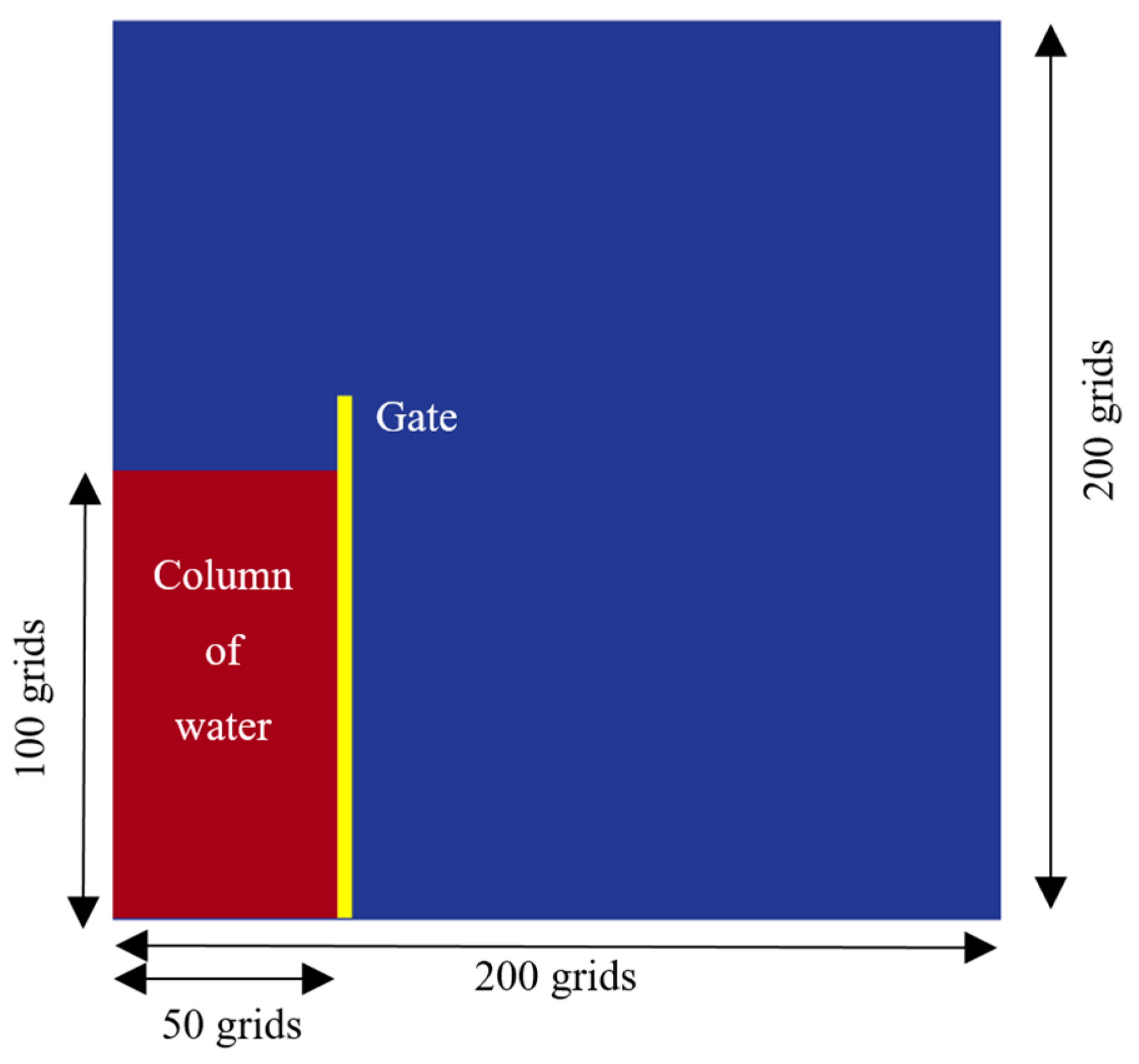
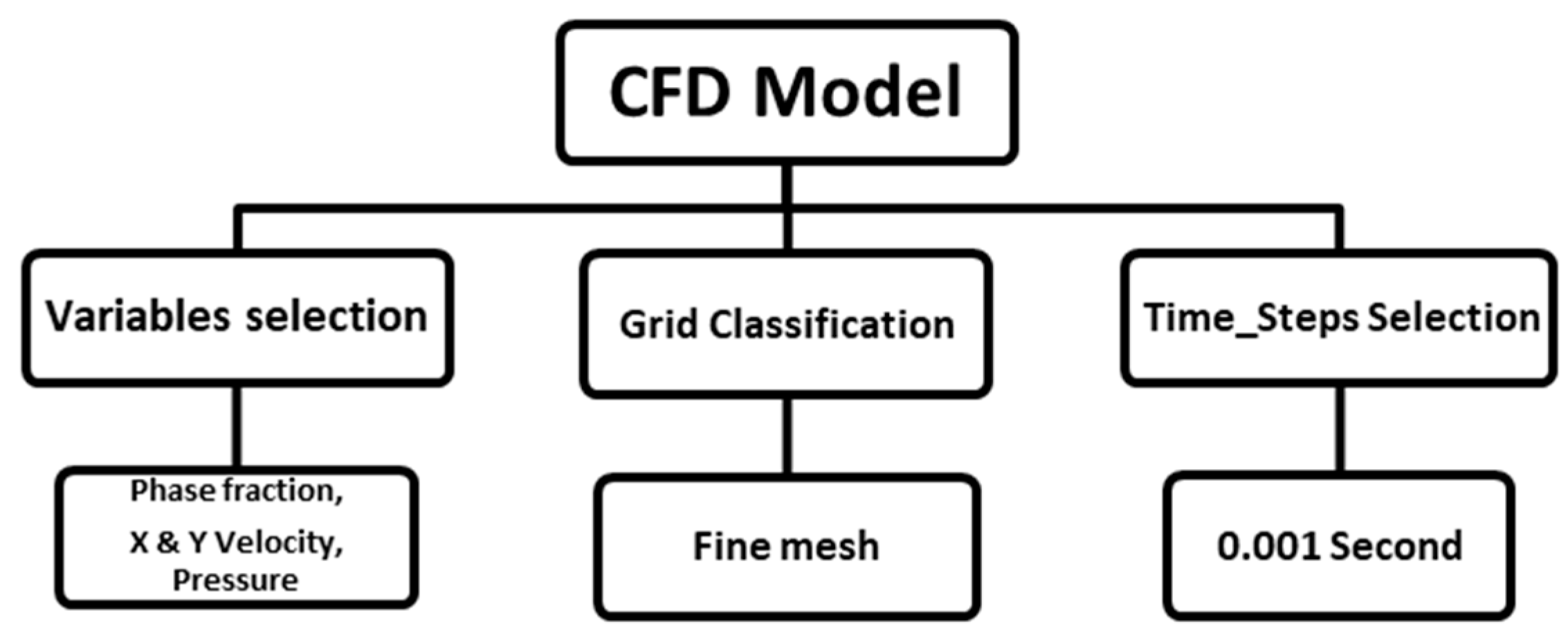
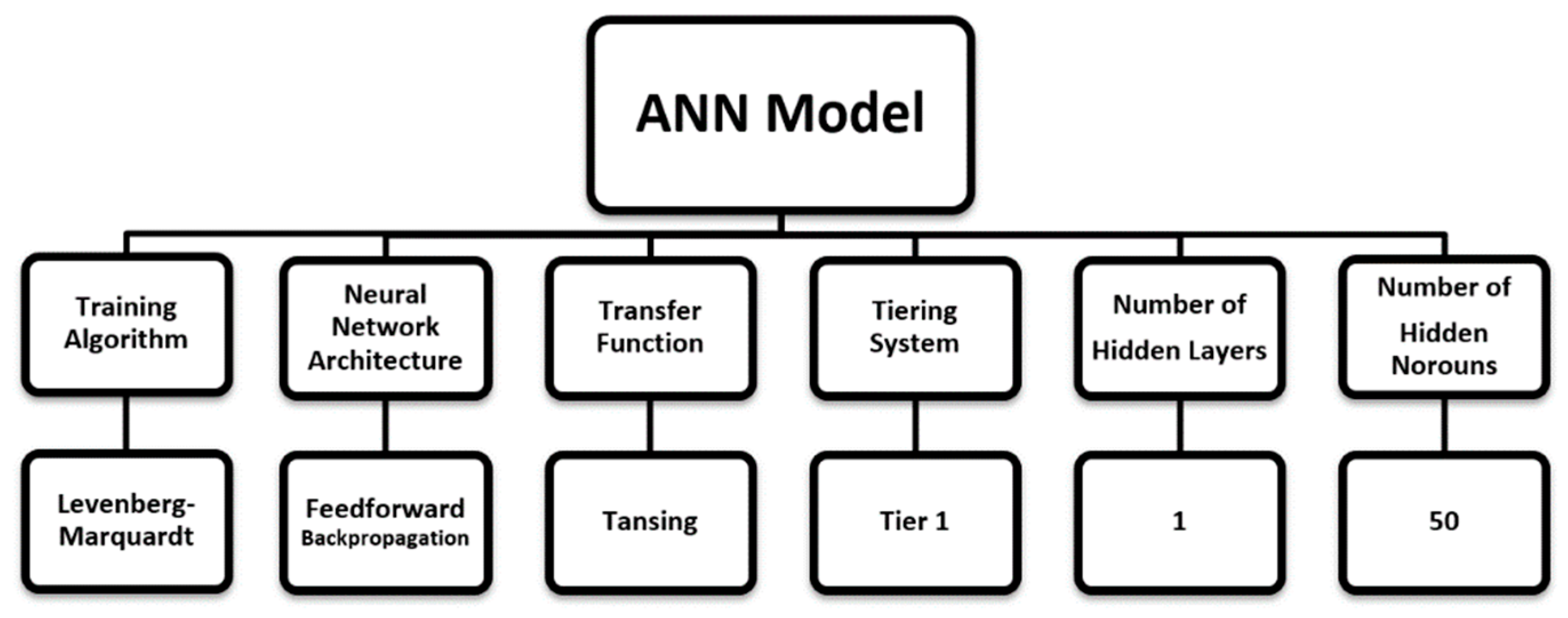
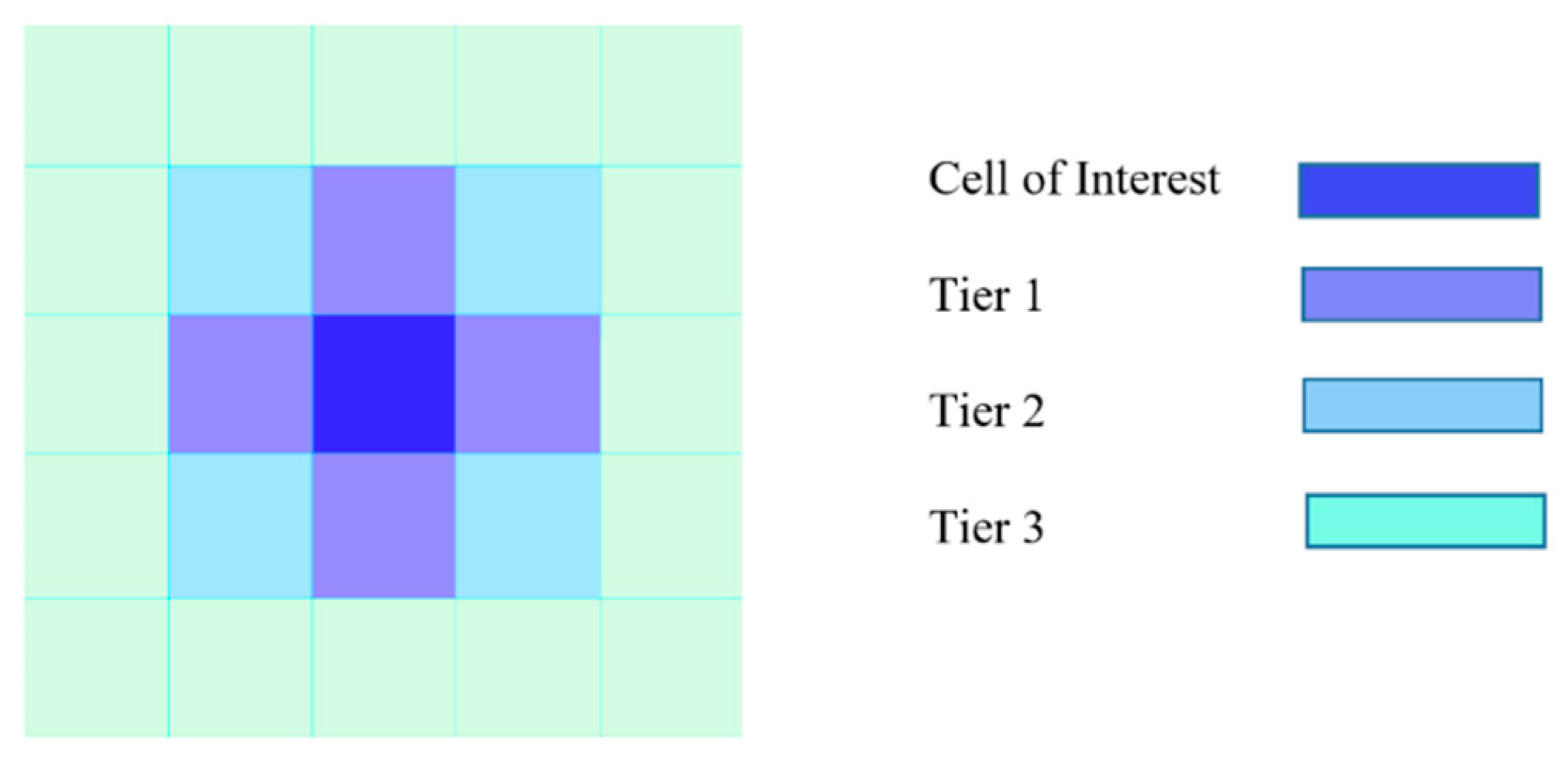
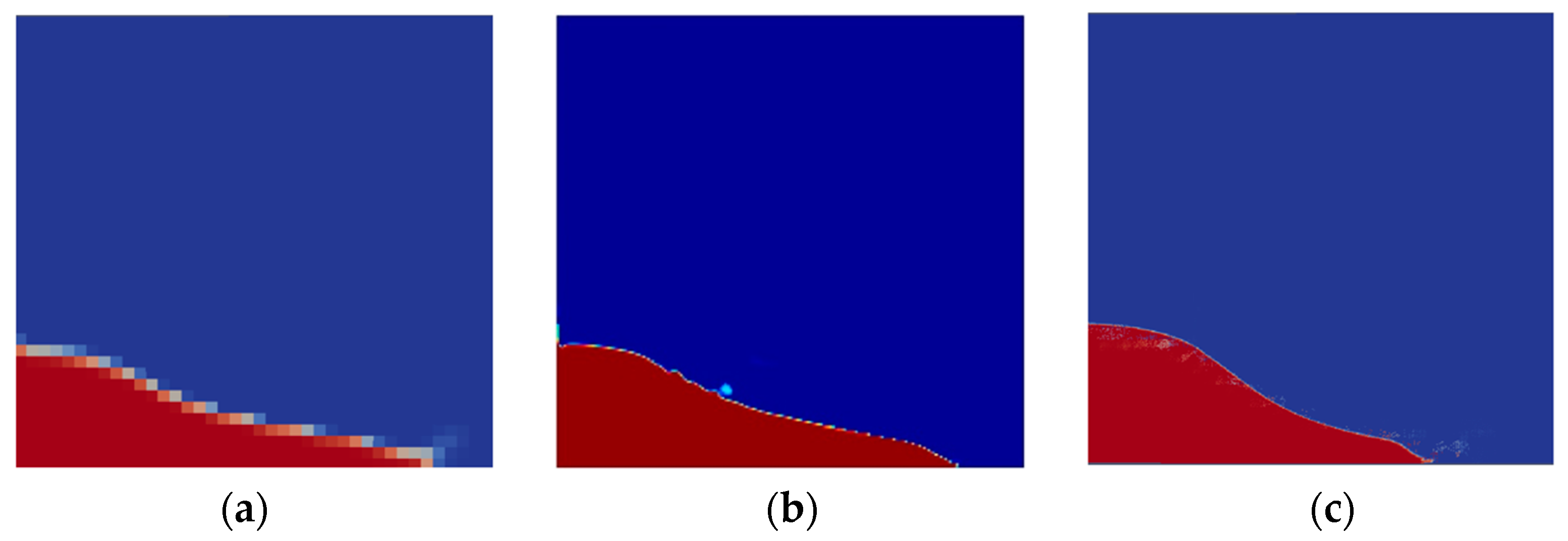
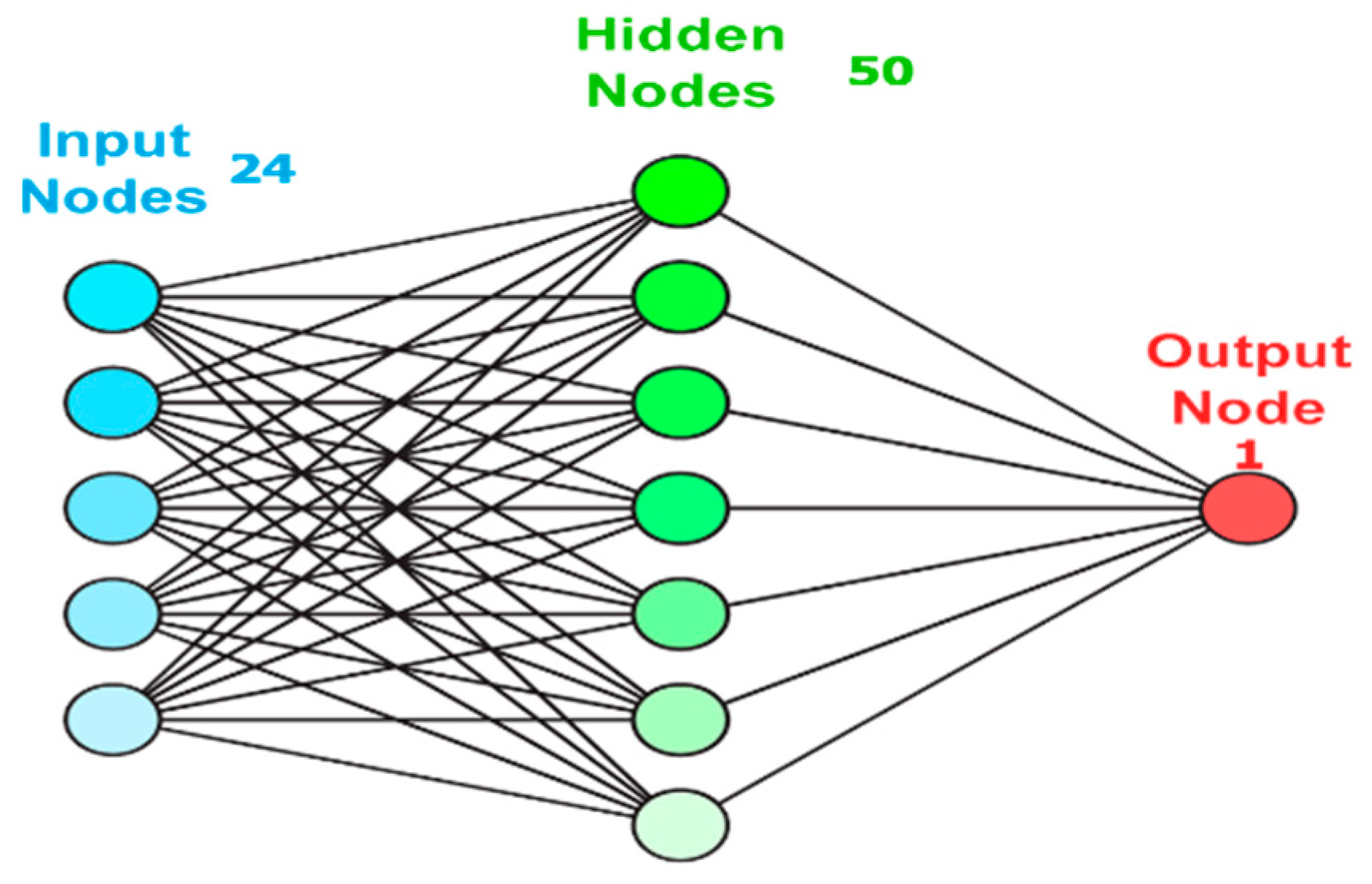

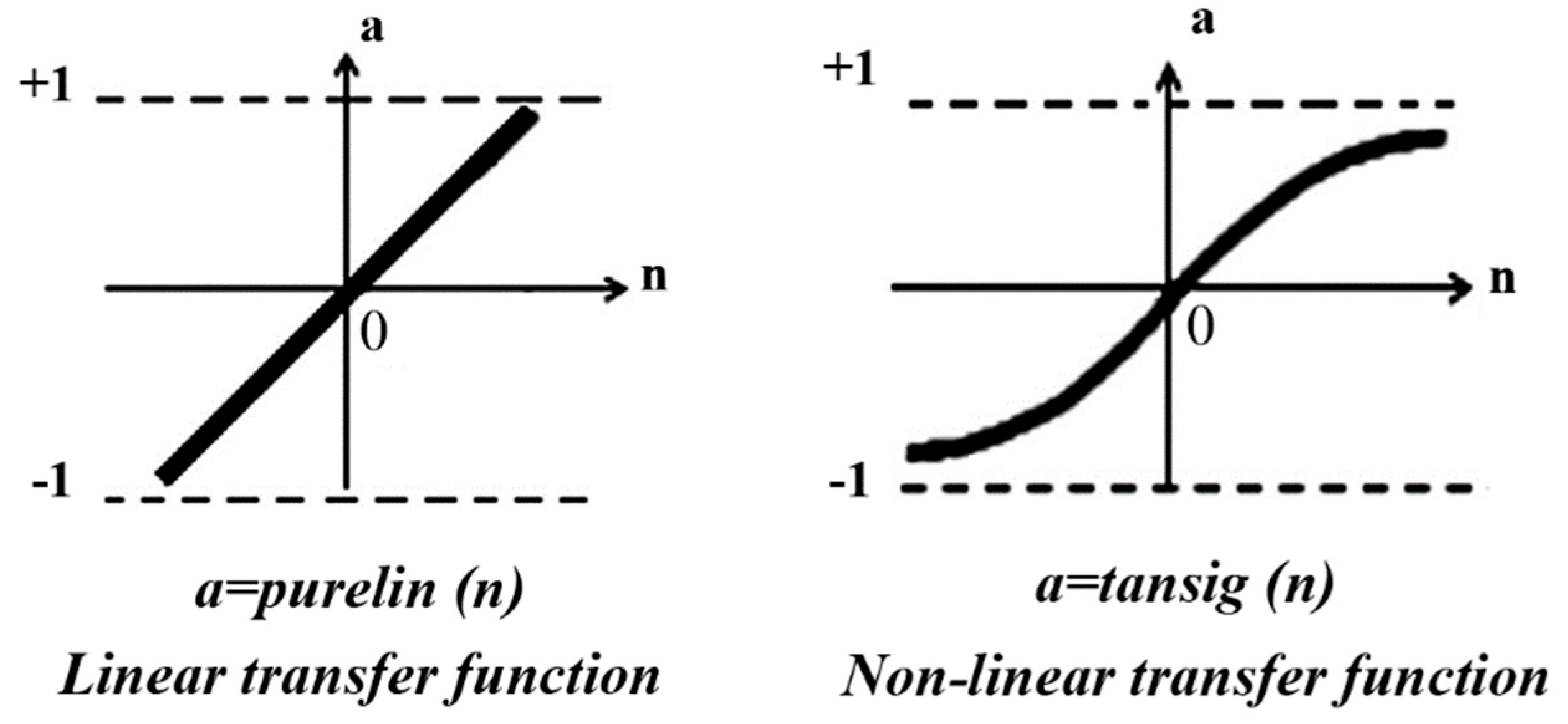
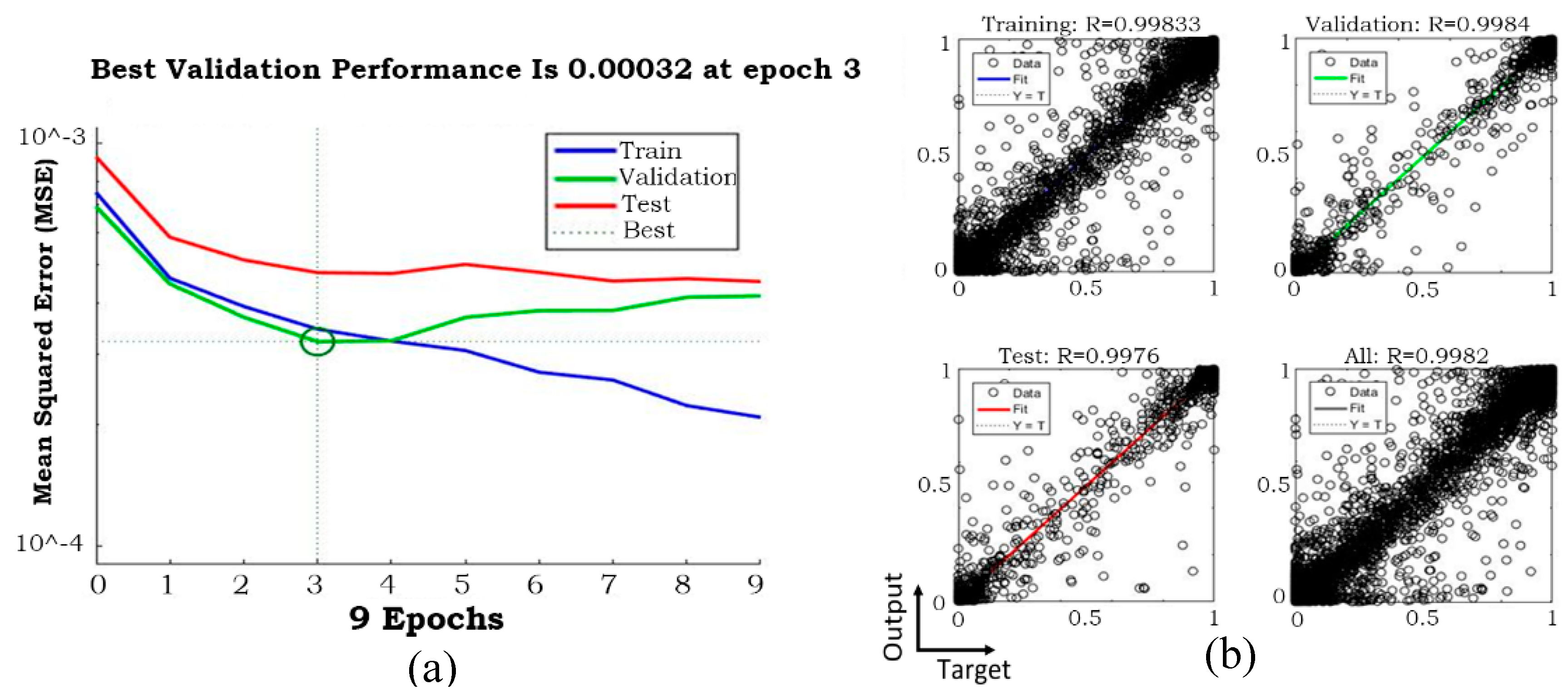
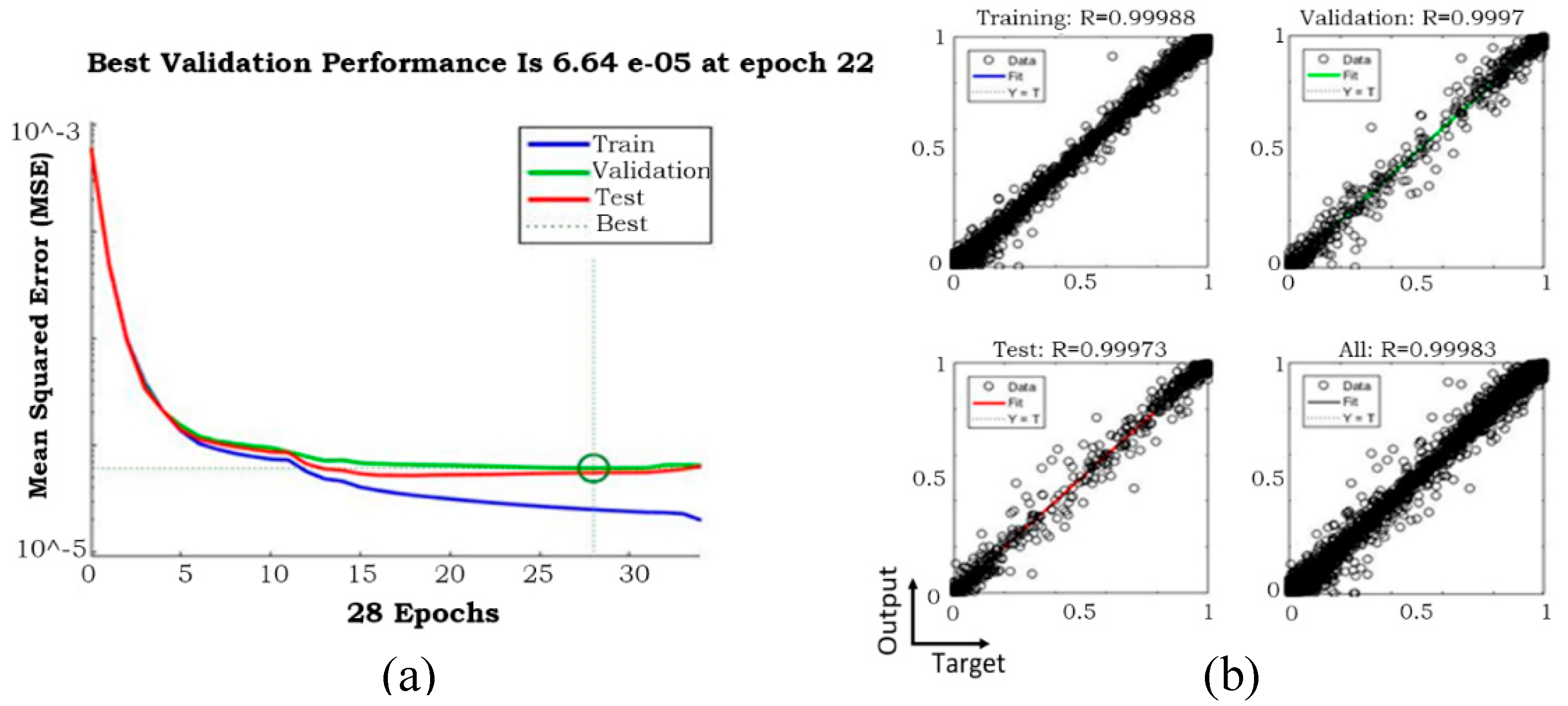
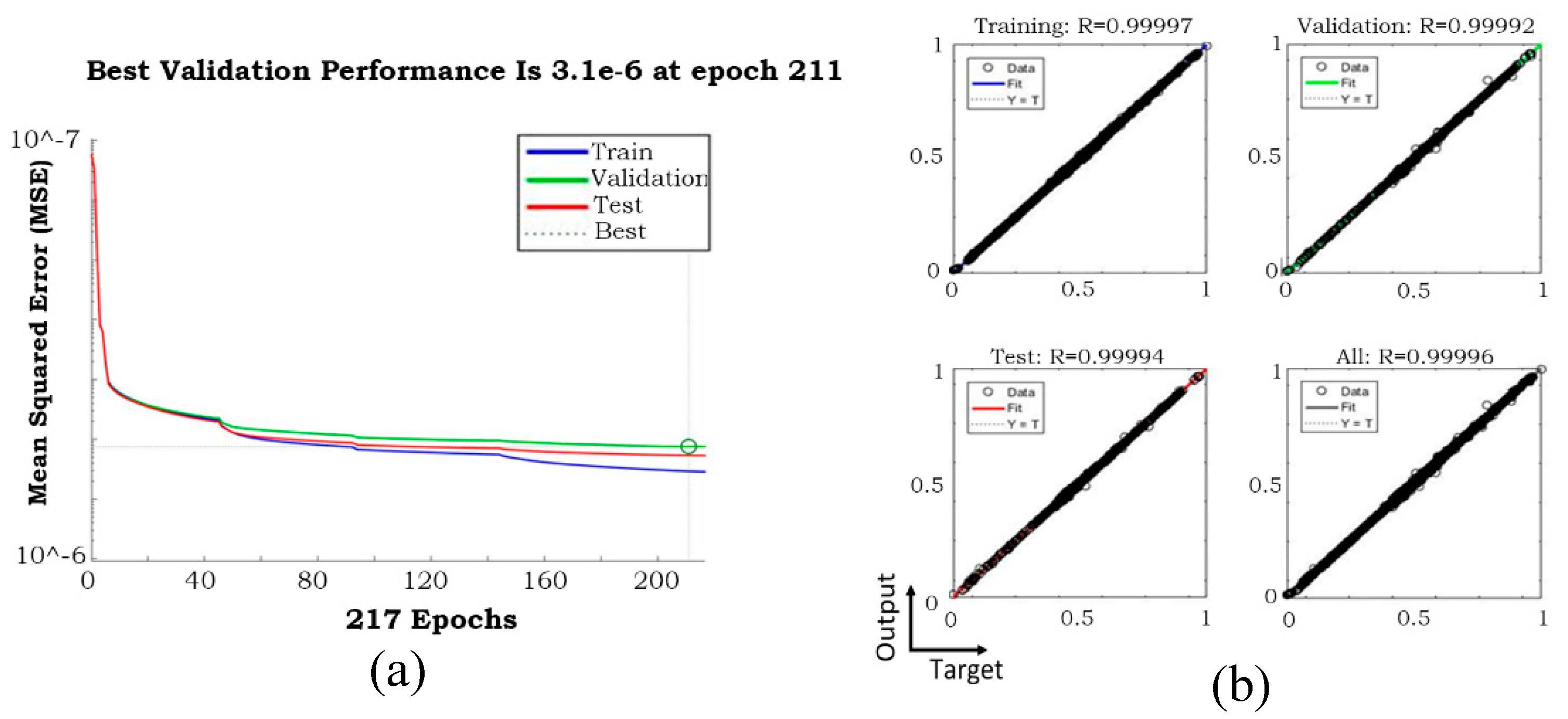


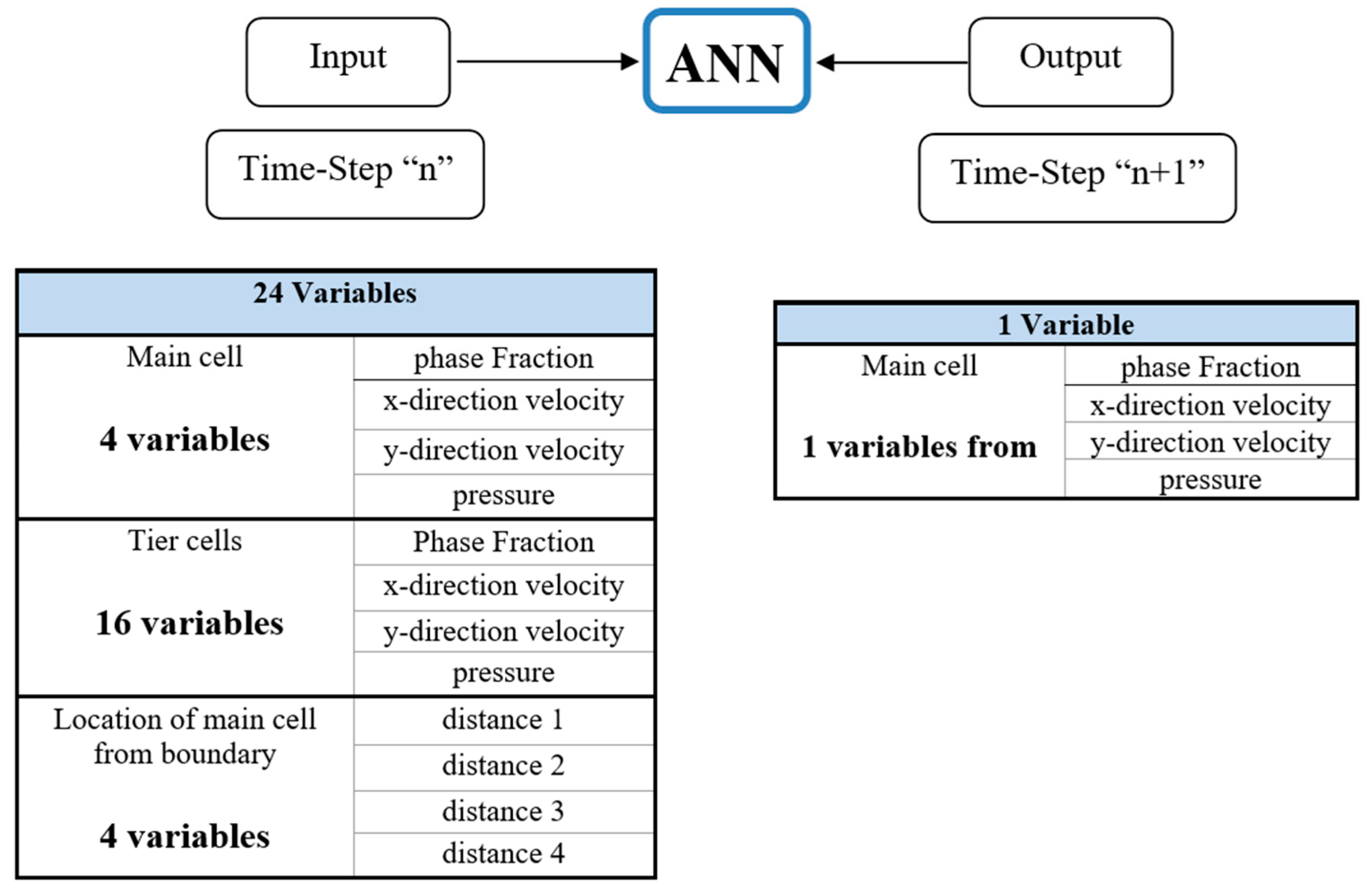

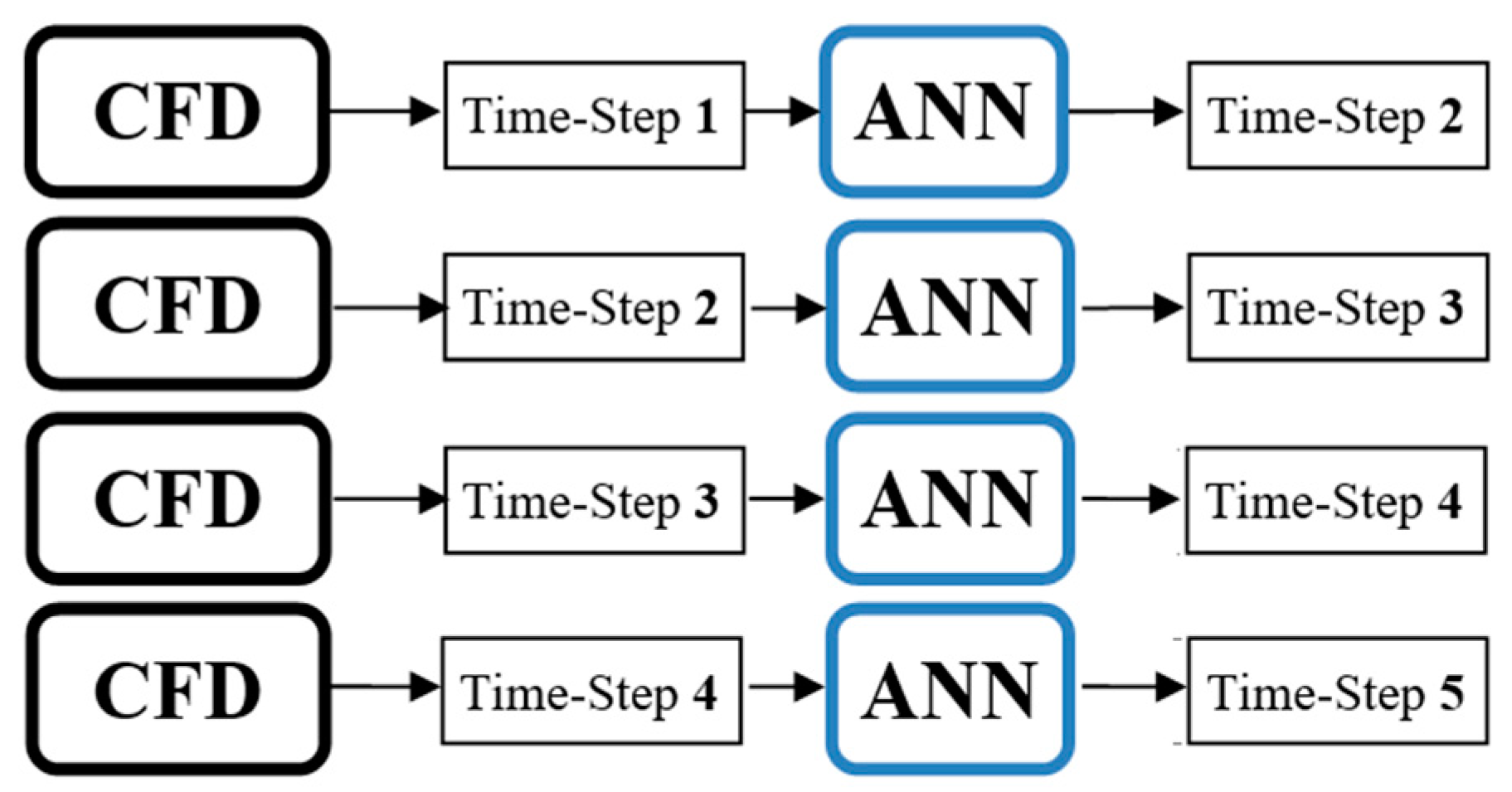
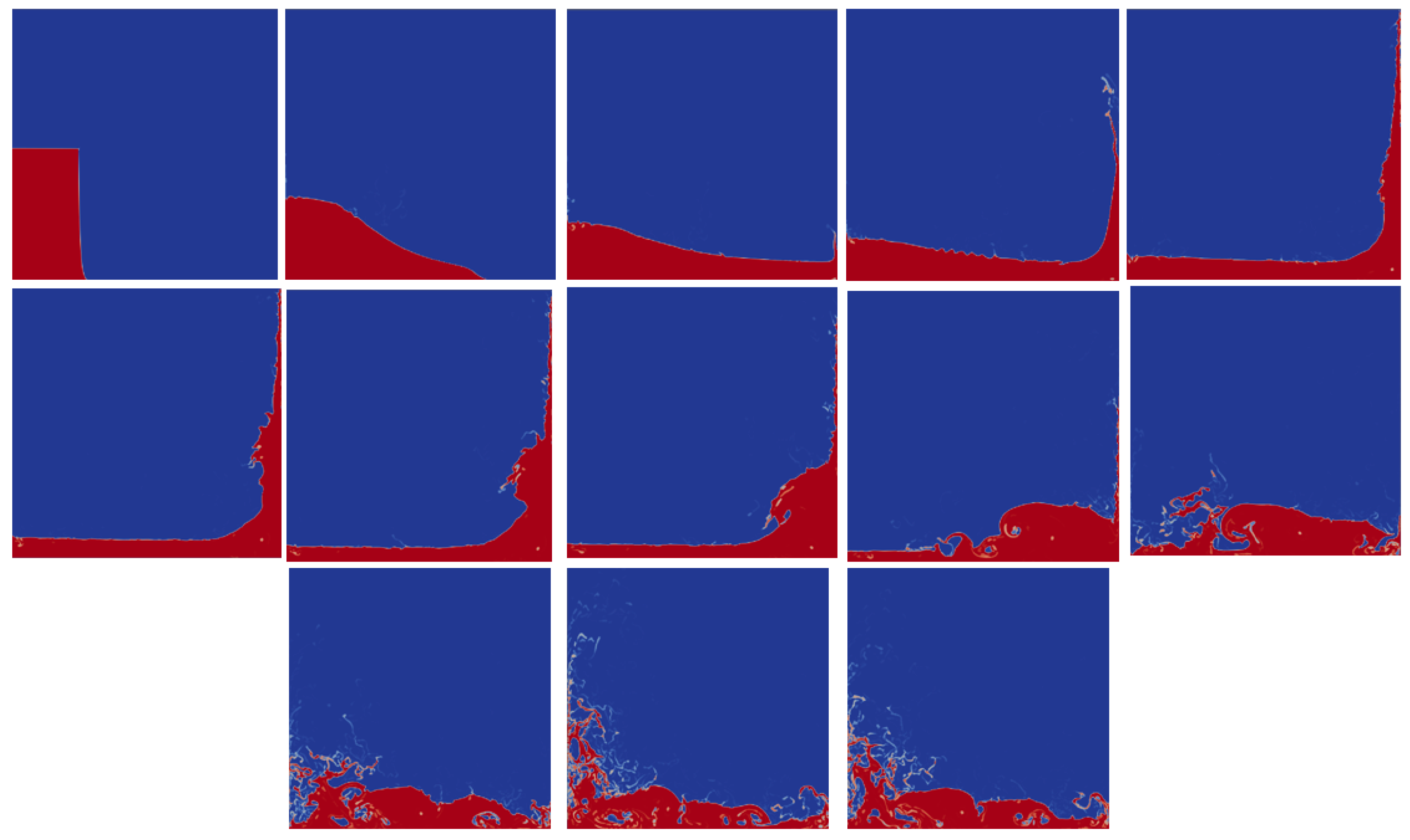



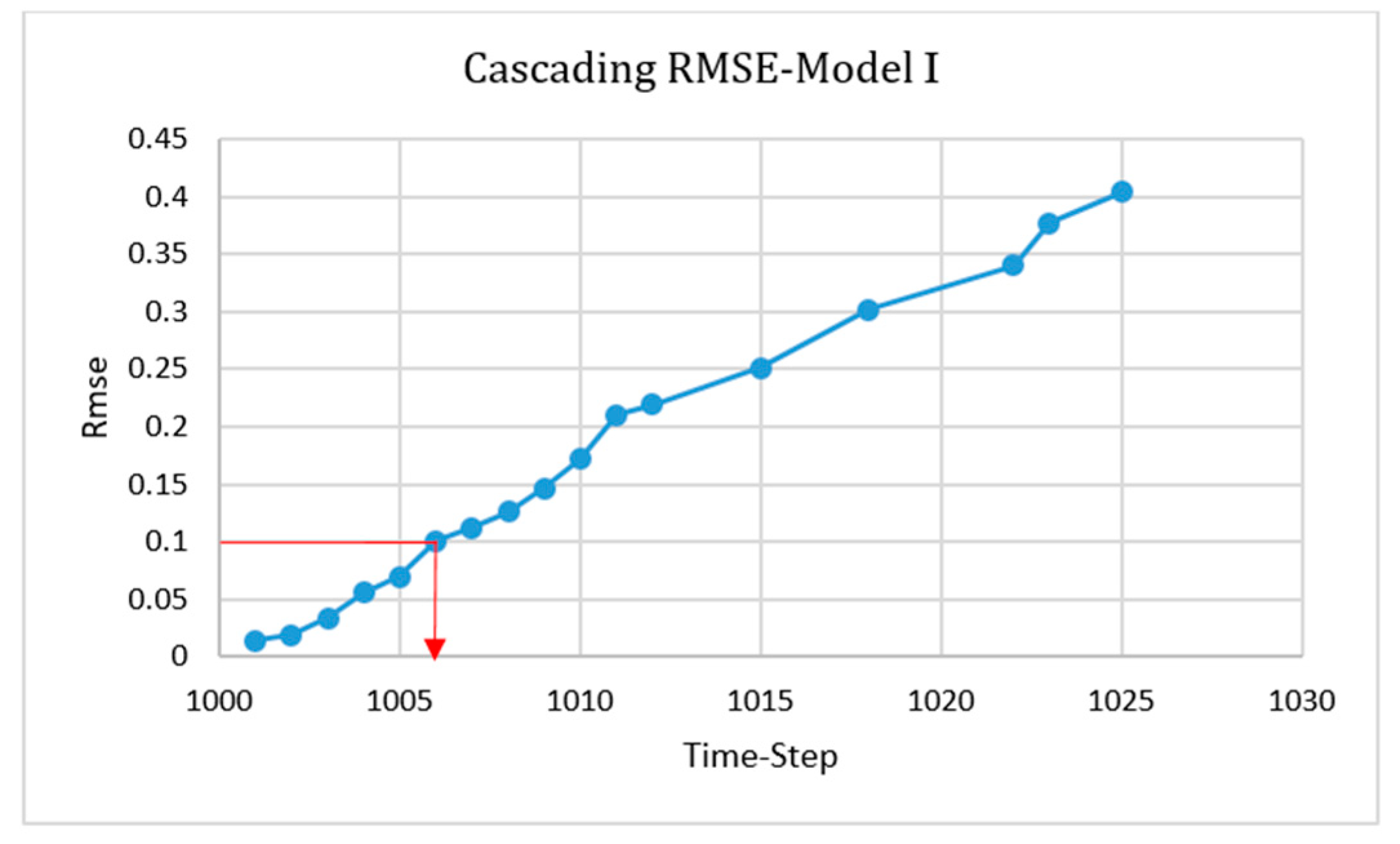




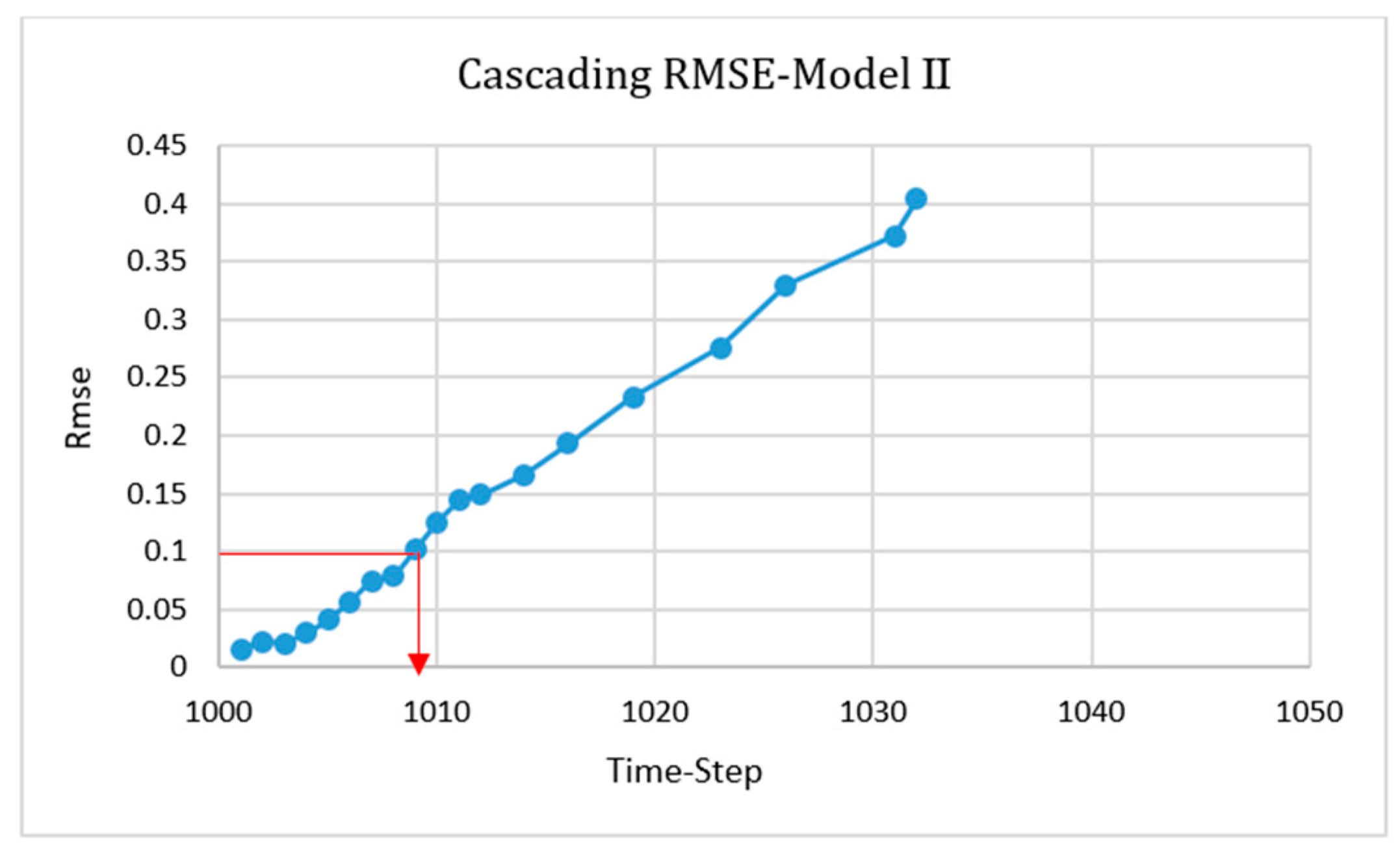
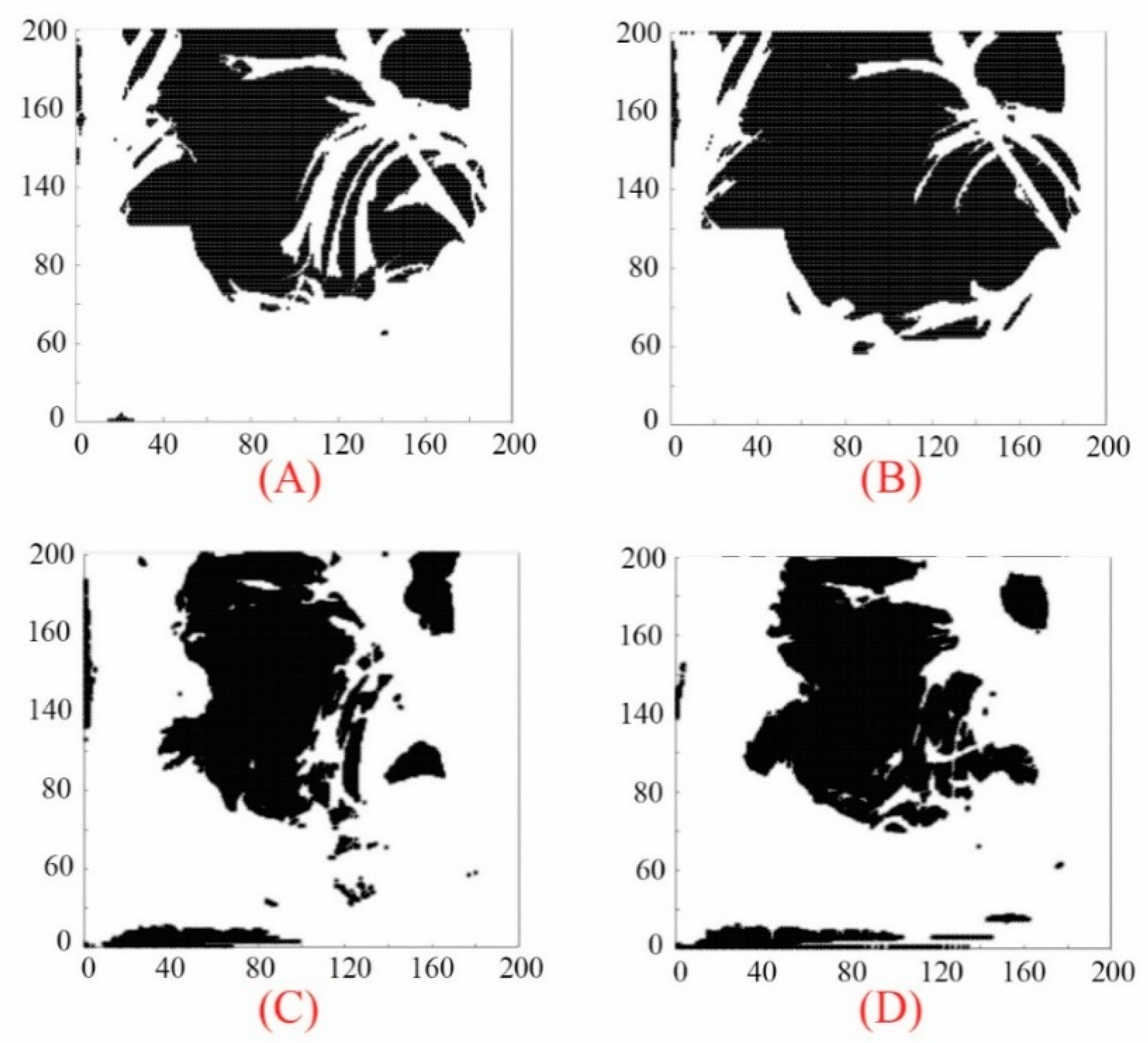
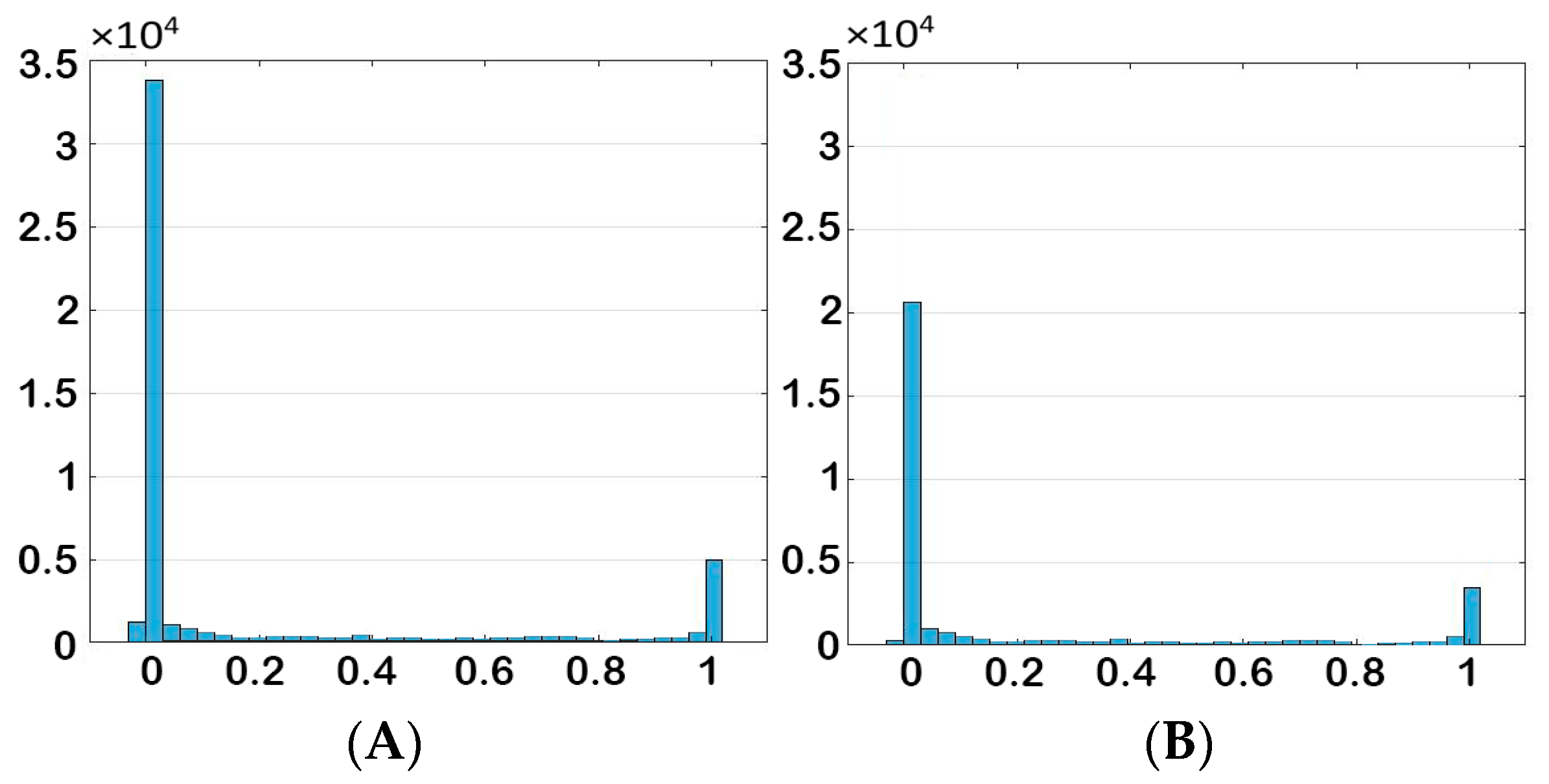
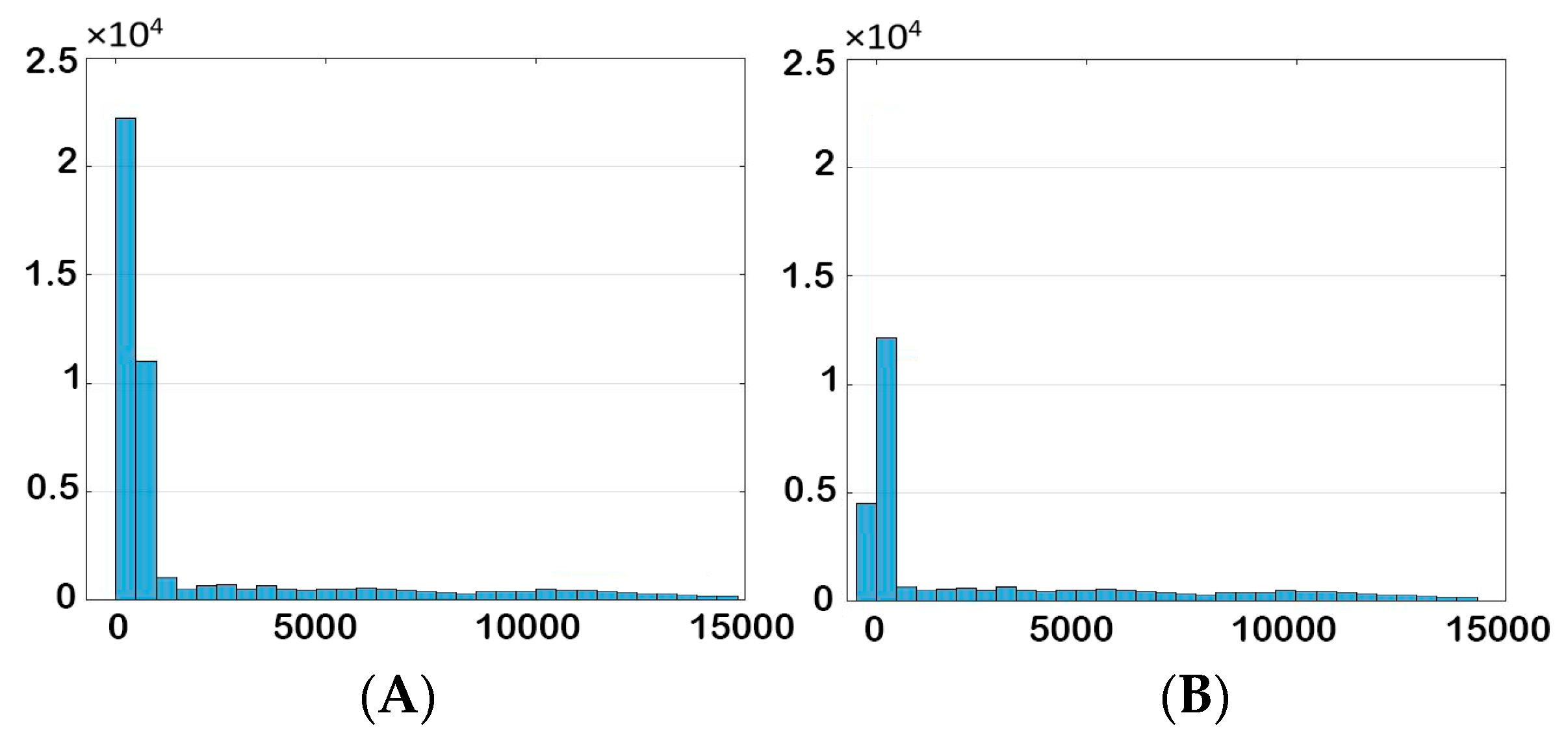
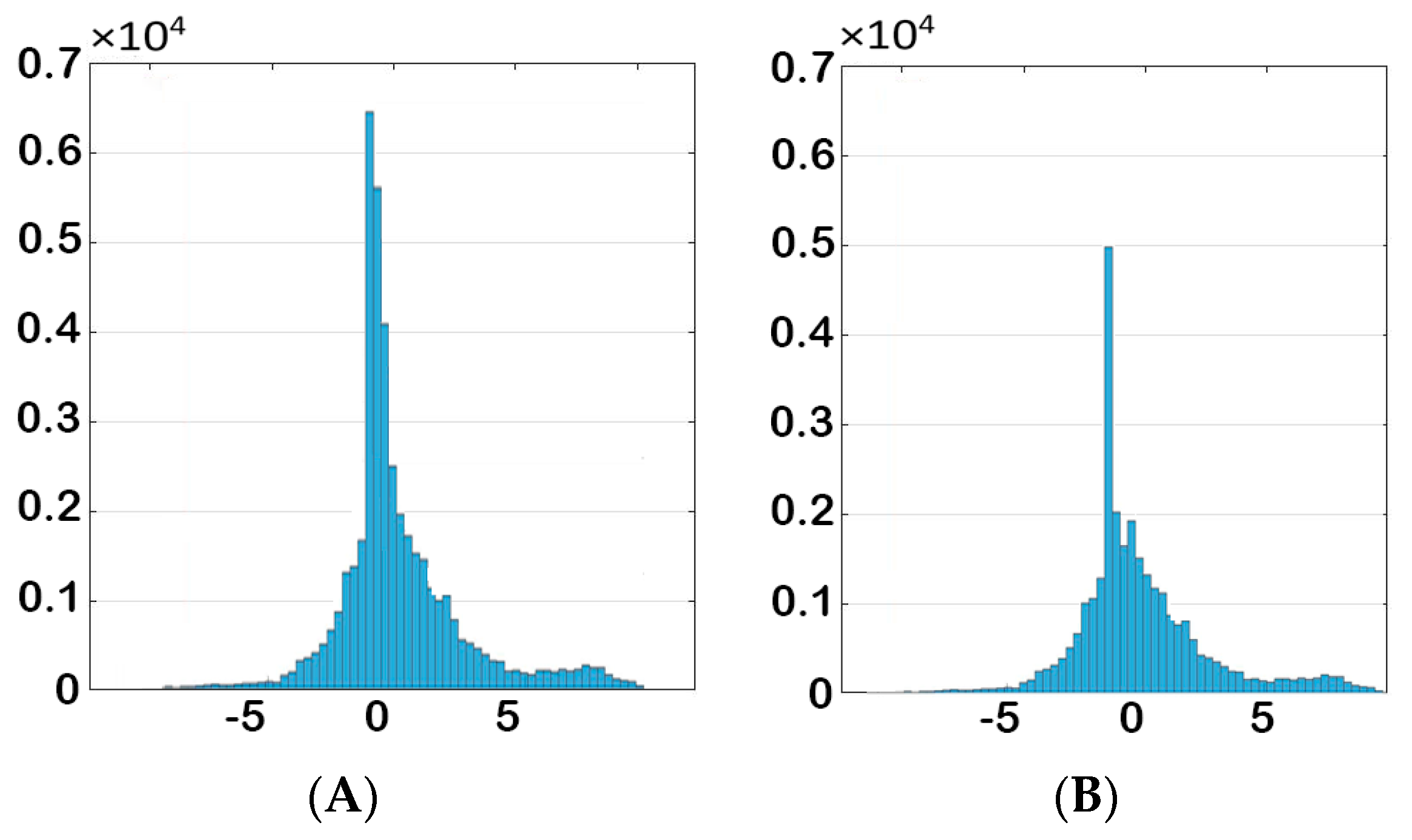
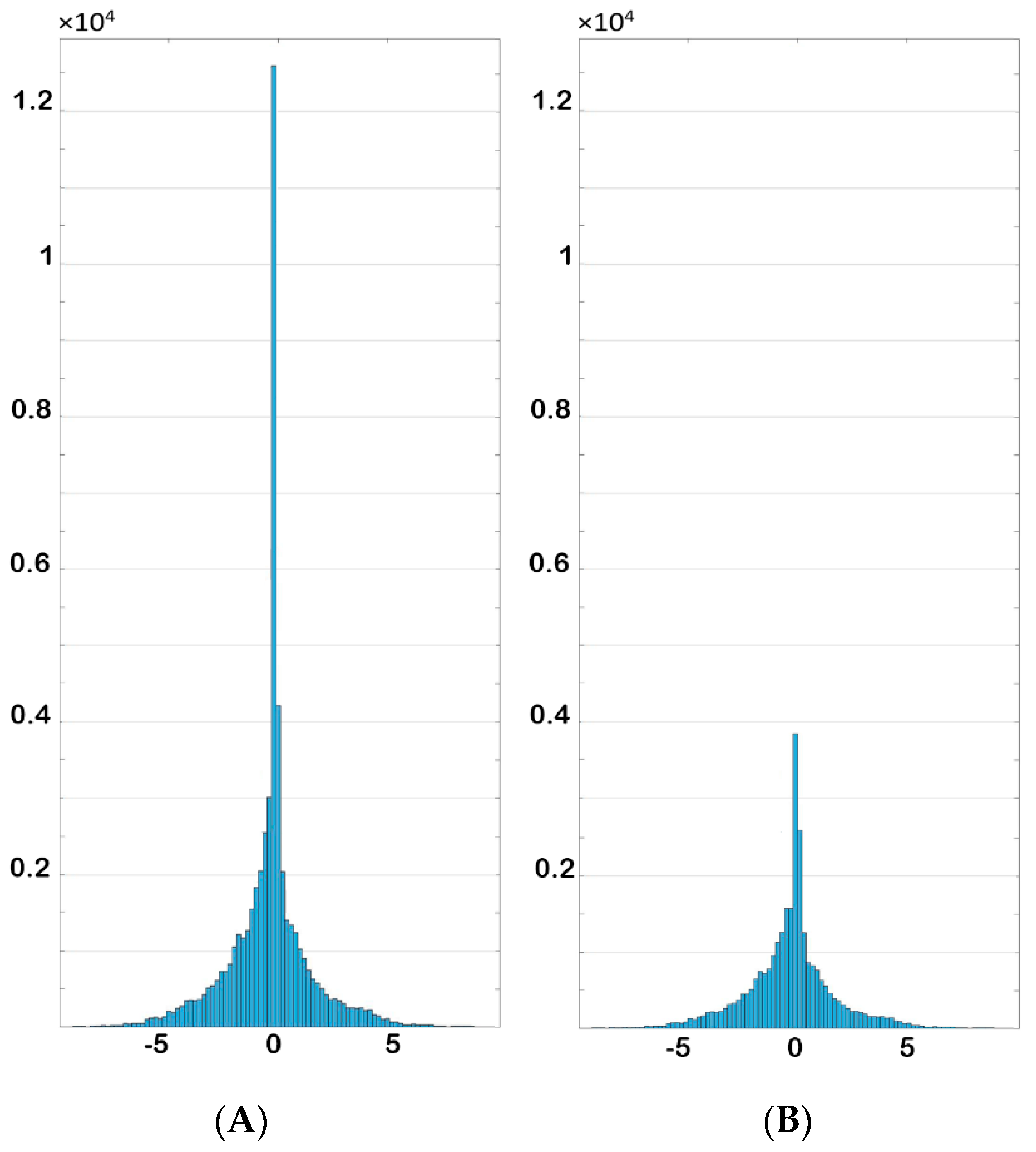




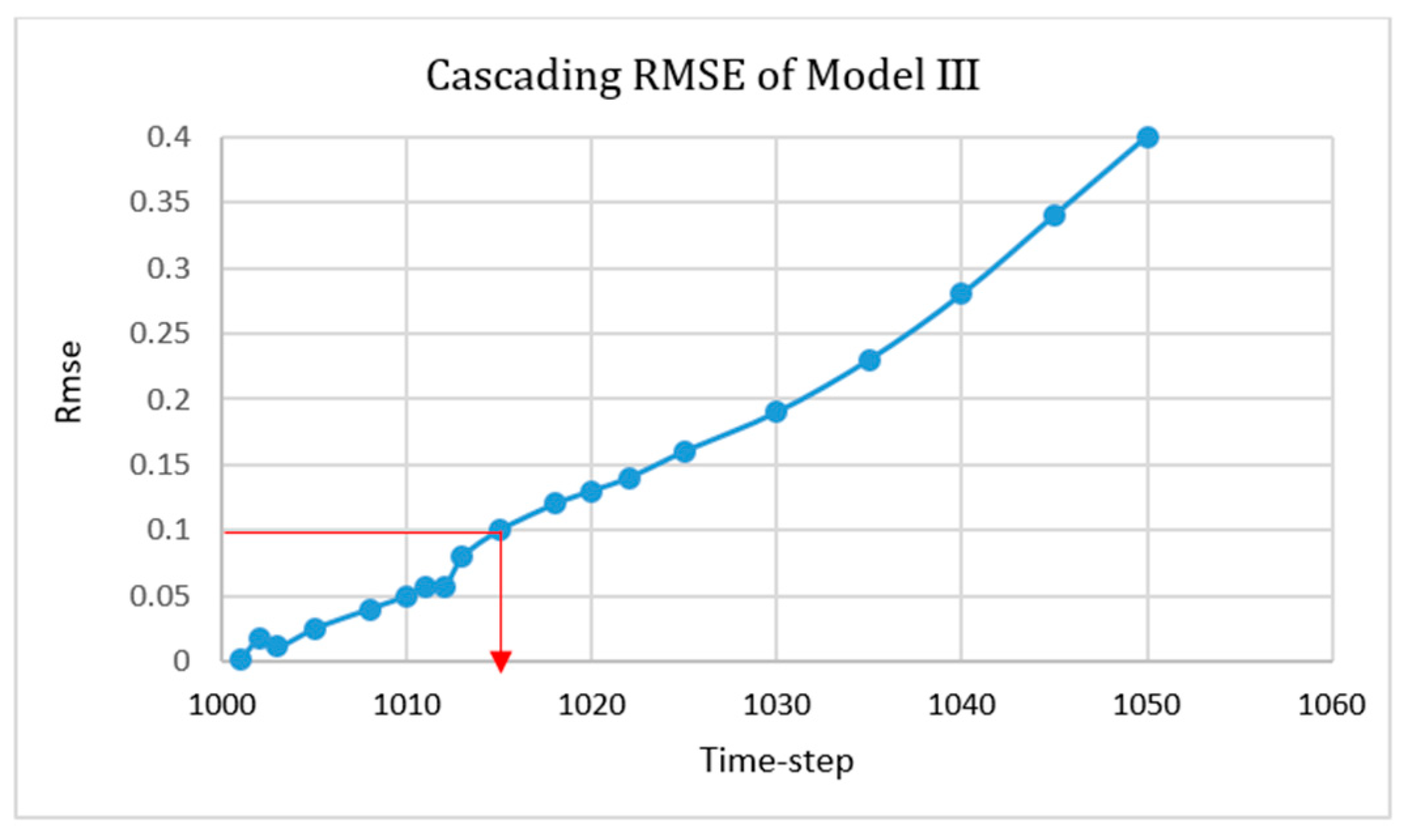




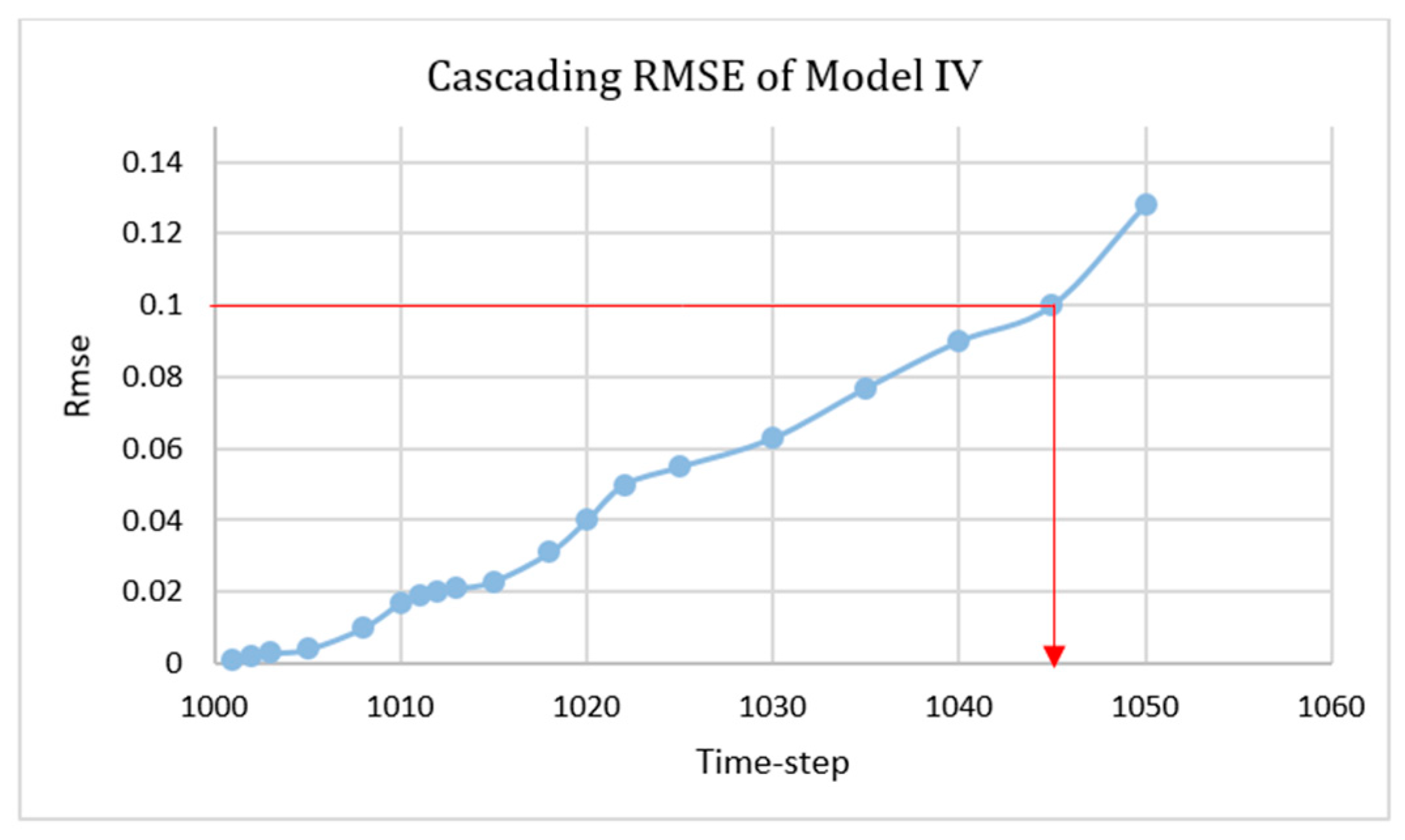
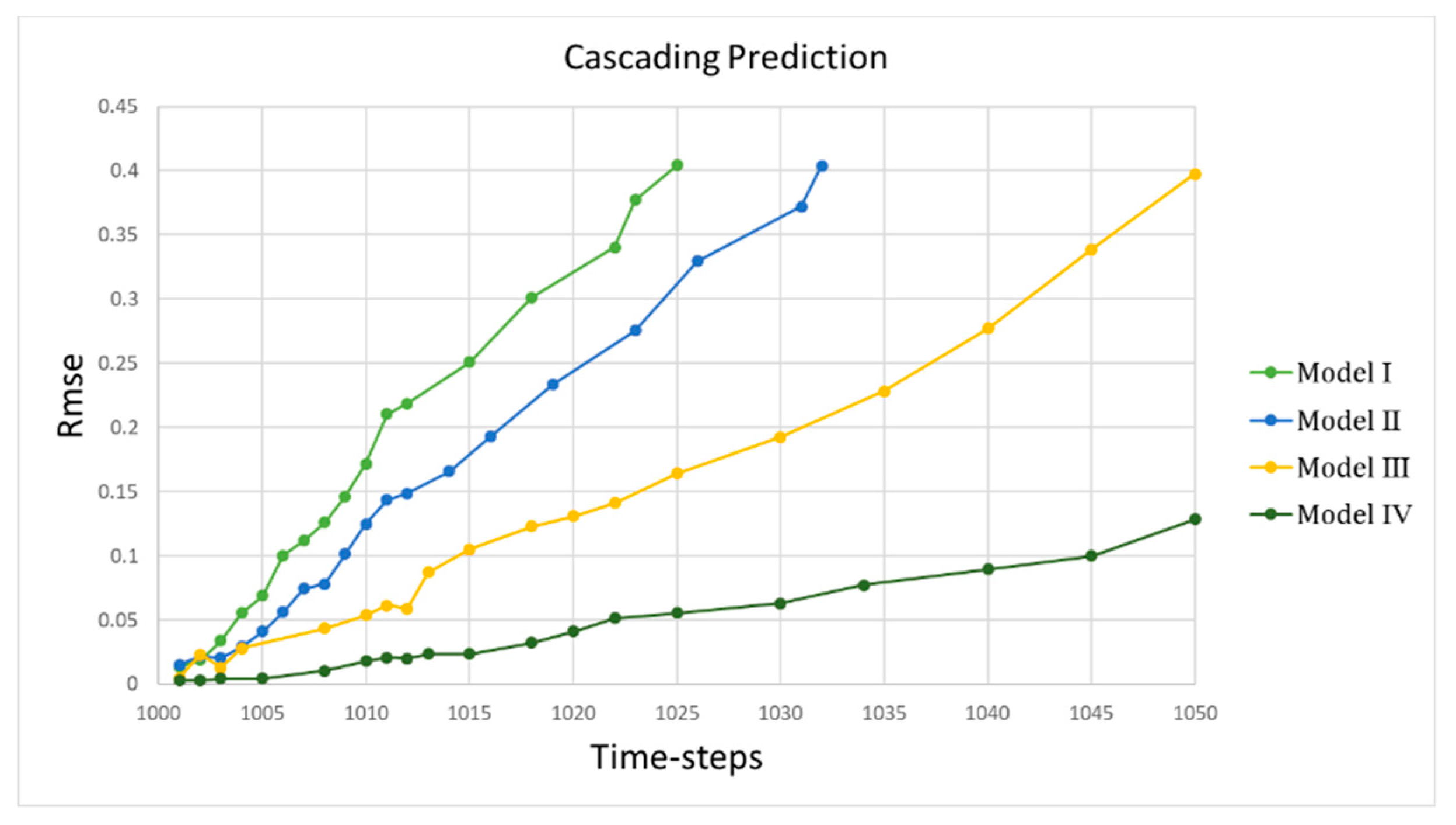
| Fluid Properties | Water (Phase 1) | Air (Phase 2) | Symbol | Unit |
|---|---|---|---|---|
| Kinematic viscosity | 1.0 × 10−6 | 1.48 × 10−5 | ν | m2·s−1 |
| Density | 1.0 × 103 | 1.0 | ρ | kg·m−3 |
| Surface tension | 0.07 | 0.07 | δ | N·m−1 |
| Velocity | - | - | U | m·s−1 |
| Pressure | - | - | p | N·m−2 |
| Number of input: 24 | 4 parameters from Main cell | Phase Fraction |
| x-direction velocity | ||
| y-direction velocity | ||
| pressure | ||
| 16 parameters from tier cells | Phase Fraction | |
| x-direction velocity | ||
| y-direction velocity | ||
| pressure | ||
| 4 parameters for Location of main cell | distance 1 | |
| distance 2 | ||
| distance 3 | ||
| distance 4 |
| Grid Classification | Dimension (x × y) | No. of Cells | Cell Size (cm) |
|---|---|---|---|
| Medium | 50 × 50 | 2500 | 1.168 × 1.168 |
| Fine | 200 × 200 | 40,000 | 0.292 × 0.292 |
| Very Fine | 400 × 400 | 160,000 | 0.146 × 0.146 |
| Parameter | Number of Total Grids | Number of Constant (Eliminated) Grids | Number of Non-Stationary Grids | % of Elimination |
|---|---|---|---|---|
| Phase fraction | 40,000 | 13,327 | 26,673 | 33% |
| Pressure | 40,000 | 17,235 | 22,765 | 43% |
| X-direction-velocity | 40,000 | 10,336 | 29,664 | 26% |
| Y-direction-velocity | 40,000 | 10,214 | 29,786 | 25% |
© 2019 by the author. Licensee MDPI, Basel, Switzerland. This article is an open access article distributed under the terms and conditions of the Creative Commons Attribution (CC BY) license (http://creativecommons.org/licenses/by/4.0/).
Share and Cite
Hosseini Boosari, S.S. Predicting the Dynamic Parameters of Multiphase Flow in CFD (Dam-Break Simulation) Using Artificial Intelligence-(Cascading Deployment). Fluids 2019, 4, 44. https://doi.org/10.3390/fluids4010044
Hosseini Boosari SS. Predicting the Dynamic Parameters of Multiphase Flow in CFD (Dam-Break Simulation) Using Artificial Intelligence-(Cascading Deployment). Fluids. 2019; 4(1):44. https://doi.org/10.3390/fluids4010044
Chicago/Turabian StyleHosseini Boosari, S. Sina. 2019. "Predicting the Dynamic Parameters of Multiphase Flow in CFD (Dam-Break Simulation) Using Artificial Intelligence-(Cascading Deployment)" Fluids 4, no. 1: 44. https://doi.org/10.3390/fluids4010044
APA StyleHosseini Boosari, S. S. (2019). Predicting the Dynamic Parameters of Multiphase Flow in CFD (Dam-Break Simulation) Using Artificial Intelligence-(Cascading Deployment). Fluids, 4(1), 44. https://doi.org/10.3390/fluids4010044




